Nowadays we look back on American prohibition with justifiable astonishment. Is it really true that an entire nation allowed itself to be denied a beer or scotch by a tiny group of tambourine-bashing fanatics? Sadly, yes it is, despite a total lack of evidence that alcohol causes any harm to humans, unless consumed in truly astronomical quantities.
Alas, the safety of alcohol was of no interest to the tambourine-bashers, for whom control over others was the one and only true goal. Americans were visibly "sinning" by enjoying themselves having a few alcoholic drinks, and the puritans interceded on behalf of God to make them all feel miserable again.
Although there is no direct link between alcohol and tobacco, the history of American prohibition is important, because it helps us understand how a tiny number of zealots managed to control the behavior and lives of tens of millions of people. Nowadays exactly the same thing is happening to smokers, though this time it is at the hands of government zealots and ignorant medical practitioners rather than tambourine-bashing religious fanatics.
Certain governments know that their past actions are directly responsible for causing most of the lung and skin cancers in the world today, so they go to extreme lengths in trying to deflect responsibility and thus financial liability away from themselves, and onto harmless organic tobacco instead. As we will find later in the report, humble organic tobacco has never hurt anyone, and in certain ways can justifiably claim to provide startling health protection.
Not all governments around the world share the same problem. Japan and Greece have the highest numbers of adult cigarette smokers in the world, but the lowest incidence of lung cancer. In direct contrast to this, America, Australia, Russia, and some South Pacific island groups have the lowest numbers of adult cigarette smokers in the world, but the highest incidence of lung cancer. This is clue number-one in unraveling the absurd but entrenched western medical lie that "smoking causes lung cancer."
The first European contact with tobacco was in 1492, when Columbus and fellow explorer Rodriguo de Jerez saw natives smoking in Cuba. That very same day, de Jerez took his first puff and found it very relaxing, just as the locals had assured him it would be. This was an important occasion, because Rodriguo de Jerez discovered what the Cubans and native Americans had known for many centuries: that cigar and cigarette smoking is not only relaxing, it also cures coughs and other minor ailments. When he returned home, Rodriguo de Jerez proudly lit a cigar in the street, and was promptly arrested and imprisoned for three years by the horrified Spanish Inquisition. De Jerez thus became the first victim of the anti-smoking lobbies.
In less than a century, smoking became a much enjoyed and accepted social habit throughout Europe, with thousands of tons of tobacco being imported from the colonies to meet the increasing demand. A growing number of writers praised tobacco as a universal remedy for mankind's ills. By the early 20th Century almost one in every two people smoked, but the incidence of lung cancer remained so low that it was almost immeasurable. Then something extraordinary happened on July 16, 1945: a terrifying cataclysmic event that would eventually cause western governments to distort the perception of smoking forever. As K. Greisen recalls:
"When the intensity of the light had diminished, I put away the glass and looked toward the tower directly. At about this time I noticed a blue color surrounding the smoke cloud. Then someone shouted that we should observe the shock wave travelling along the ground. The appearance of this was a brightly lighted circular area, near the ground, slowly spreading out towards us. The color was yellow.This was the notorious "Trinity Test", the first dirty nuclear weapon to be detonated in the atmosphere. A six-kilogram sphere of plutonium, compressed to supercriticality by explosive lenses, Trinity exploded over New Mexico with a force equal to approximately 20,000 tons of TNT. Within seconds, billions of deadly radioactive particles were sucked into the atmosphere to an altitude of six miles, where high-speed jet streams could circulate them far and wide.
"The permanence of the smoke cloud was one thing that surprised me. After the first rapid explosion, the lower part of the cloud seemed to assume a fixed shape and to remain hanging motionless in the air. The upper part meanwhile continued to rise, so that after a few minutes it was at least five miles high. It slowly assumed a zigzag shape because of the changing wind velocity at different altitudes. The smoke had pierced a cloud early in its ascent, and seemed to be completely unaffected by the cloud."
The American Government knew about the radiation in advance, was well aware of its lethal effects on humans, but bluntly ordered the test with a complete disregard for health and welfare. In law, this was culpable gross negligence, but the American Government did not care. Sooner or later, one way or the other, they would find another culprit for any long-term effects suffered by Americans and other citizens in local and more remote areas.
If a single microscopic radioactive fallout particle lands on your skin at the beach, you get skin cancer. Inhale a single particle of the same lethal muck, and death from lung cancer becomes inevitable, unless you happen to be an exceptionally lucky cigarette smoker. The solid microscopic radioactive particle buries itself deep in the lung tissue, completely overwhelms the body's limited reserves of vitamin B17, and causes rampant uncontrollable cell multiplication.
How can we be absolutely sure that radioactive fallout particles really cause lung cancer every time a subject is internally exposed? For real scientists, as opposed to medical quacks and government propagandists, this is not a problem. For any theory to be accepted scientifically, it must first be proven in accordance with rigorous requirements universally agreed by scientists. First the suspect radioactive agent must be isolated, then used in properly controlled laboratory experiments to produce the claimed result, i.e. lung cancer in mammals.
Scientists have ruthlessly sacrificed tens of thousands of mice and rats in this way over the years, deliberately subjecting their lungs to radioactive matter. The documented scientific results of these various experiments are identical. Every mouse or rat obediently contracts lung cancer, and every mouse or rat then dies. Theory has thus been converted to hard scientific fact under tightly controlled laboratory conditions. The suspect agent [radioactive matter] caused the claimed result [lung cancer] when inhaled by mammals.
The overall magnitude of lung cancer risk to humans from atmospheric radioactive fallout cannot be overstated. Before Russia, Britain and America outlawed atmospheric testing on August 5, 1963, more than 4,200 kilograms of plutonium had been discharged into the atmosphere. Because we know that less than one microgram [millionth of a single gram] of inhaled plutonium causes terminal lung cancer in a human, we therefore know that your friendly government has lofted 4,200,000,000 [4.2 Billion] lethal doses into the atmosphere, with particle radioactive half-life a minimum of 50,000 years. Frightening? Unfortunately it gets worse.
The plutonium mentioned above exists in the actual nuclear weapon before detonation, but by far the greatest number of deadly radioactive particles are those derived from common dirt or sand sucked up from the ground, and irradiated while travelling vertically through the weapon's fireball. These particles form by far the largest part of the "smoke" in any photo of an atmospheric nuclear detonation. In most cases several tons of material are sucked up and permanently irradiated in transit, but let us be incredibly conservative and claim that only 1,000 kilograms of surface material is sucked up by each individual atmospheric nuclear test.
Before being banned by Russia, Britain and America, a total of 711 atmospheric nuclear tests were conducted, thereby creating 711,000 kilograms of deadly microscopic radioactive particles, to which must be added the original 4,200 kilograms from the weapons themselves, for a gross though very conservative total of 715,200 kilograms. There are more than a million lethal doses per kilogram, meaning that your governments have contaminated your atmosphere with more than 715,000,000,000 [715 Billion] such doses, enough to cause lung or skin cancer 117 times in every man, woman and child on earth.
Before you ask, no, the radioactive particles do not just "fade away", at least not in your lifetime or that of your children and grandchildren. With a half-life of 50,000 years or longer, these countless trillions of deadly government-manufactured radioactive particles are essentially with you forever. Circulated around the world by powerful jet streams, these particles are deposited at random, though in higher concentrations within a couple of thousand miles of the original test sites. A simple wind or other surface disturbance is all that is needed to stir them up again and create enhanced dangers for those in the vicinity.
The once-innocent activity of playfully kicking sand around on the beach in summer could nowadays easily translate to suicide, if you happen to stir up a few radioactive particles that could stick to your skin or be inhaled into your lungs. Stop poking fun at Michael Jackson when he appears at your local airport wearing a surgical mask over his nose and mouth. He may look eccentric, but Michael will almost certainly outlive most of us.
Twelve years after the cataclysmic Trinity test, it became obvious to western governments that things were getting completely out of control, with a 1957 British Medical Research Council report stating that global "deaths from lung cancer have more than doubled during the period 1945 to 1955", though no explanation was offered. During the same ten-year period, cancer deaths in the immediate proximity of Hiroshima and Nagasaki went up threefold. By the end of official atmospheric testing in 1963, the incidence of lung cancer in the Pacific Islands had increased fivefold since 1945. Having screwed your environment completely for 50,000 years, it was time for "big government" to start taking heavy diversionary action.
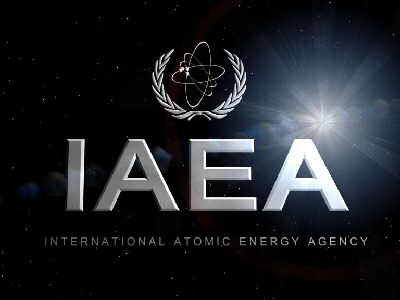
Remember, for any theory to be accepted scientifically, it must first be proven in accordance with rigorous requirements universally agreed by scientists. First the suspect agent (tobacco smoke) must be isolated, then used in properly controlled laboratory experiments to produce the claimed result, i.e. lung cancer in mammals. Despite exposing literally tens of thousands of especially vulnerable mice and rats to the equivalent of 200 cigarettes per day for years on end, "medical science" has never once managed to induce lung cancer in any mouse or rat. Yes, you did read that correctly. For more than forty years, hundreds of thousands of medical doctors have been deliberately lying to you.
The real scientists had the quasi-medical researchers by the throat, because "pairing" the deadly radioactive particle experiment with the benign tobacco smoke experiment, proved conclusively for all time that smoking cannot under any circumstances cause lung cancer. And further, in one large "accidental" experiment they were never allowed to publish, the real scientists proved with startling clarity that smoking actually helps to protect against lung cancer.
All mice and rats are used one-time-only in a specific experiment, and then destroyed. In this way researchers ensure that the results of whatever substance they are testing cannot be accidentally "contaminated" by the real or imagined effects of another substance. Then one day as if by magic, a few thousand mice from the smoking experiment "accidentally" found their way into the radioactive particle experiment, which in the past had killed every single one of its unfortunate test subjects. But this time, completely against the odds, sixty percent of the smoking mice survived exposure to the radioactive particles. The only variable was their prior exposure to copious quantities of tobacco smoke.
Government pressure was immediately brought to bear and the facts suppressed, but this did not completely silence the real scientists. Tongue-in-cheek perhaps, Professor Schrauzer, President of the International Association of Bio-inorganic Chemists, testified before a U.S. congressional committee in 1982 that it had long been well known to scientists that certain constituents of tobacco smoke act as anti-carcinogens (anti-cancer agents) in test animals. He continued that when known carcinogens (cancer-causing substances) are applied to the animals, the application of constituents of cigarette smoke counter them.
Nor did Professor Schrauzer stop there. He further testified on oath to the committee that "no ingredient of cigarette smoke has been shown to cause human lung cancer", adding that "no-one has been able to produce lung cancer in laboratory animals from smoking." It was a neat answer to a rather perplexing problem. If government blocks publication of your scientific paper, take the alternate route and put the essential facts on the written congressional record!
Predictably, this hard truth drove the government and quasi-medical "researchers" into a frenzy of rage. By 1982 they had actually started to believe their own ridiculous propaganda, and were not to be silenced by eminent members of the scientific establishment. Quite suddenly they switched the blame to other "secret" ingredients put into cigarettes by the tobacco companies. "Yes, that must be it!" they clamored eagerly, until a handful of scientists got on the phone and pointed out that these same "secret" ingredients had been included in the mice experiments, and had therefore also been proved incapable of causing lung cancer.
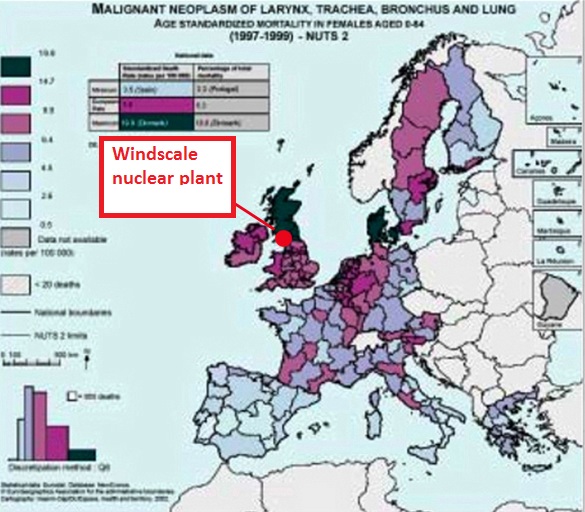
Even blind faith needs a system of positive reinforcement, which in this case became the advertising agencies and the media. Suddenly the television screens were flooded with images of terribly blackened "smoker's lungs", with the accompanying mantra that you will die in horrible agony if you don't quit now. It was all pathetic rubbish of course. On the mortuary slab the lungs of a smoker and non-smoker look an identical pink, and the only way a forensic pathologist can tell you might have been a smoker, is if he finds heavy stains of nicotine on your fingers, a packet of Camels or Marlboro in your coat pocket, or if one of your relatives unwisely admits on the record that you once smoked the demon weed.
The black lungs? From a coal miner, who throughout his working life breathed in copious quantities of microscopic black coal dust particles. Just like radioactive particles they get caught deep in the tissue of the lungs and stay there forever. If you worked down the coal mines for twenty or more years without a face mask, your lungs will probably look like this on the slab.
Many people ask exactly how it is that those smoking mice were protected from deadly radioactive particles, and even more are asking why real figures nowadays are showing far more non-smokers dying from lung cancer than smokers. Professor Sterling of the Simon Fraser University in Canada is perhaps closest to the truth, where he uses research papers to reason that smoking promotes the formation of a thin mucous layer in the lungs, "which forms a protective layer stopping any cancer-carrying particles from entering the lung tissue."
This is probably as close as we can get to the truth at present, and it does make perfect scientific sense. Deadly radioactive particles inhaled by a smoker would initially be trapped by the mucous layer, and then be ejected from the body before they could enter the tissue.
All of this may be a bit depressing for non-smokers, but there are probably one or two things you can do to minimize the risks as far as possible. Rather than shy away from smokers in your local pub or club, get as close as you can and breathe in their expensive second-hand smoke. Go on, don't be shy, suck in a few giant breaths. Or perhaps you could smoke one cigarette or small cigar after each meal, just three a day to build up a thin boundary mucous layer. If you cannot or will not do either of the above, consider phoning Michael Jackson to ask for a spare surgical mask!
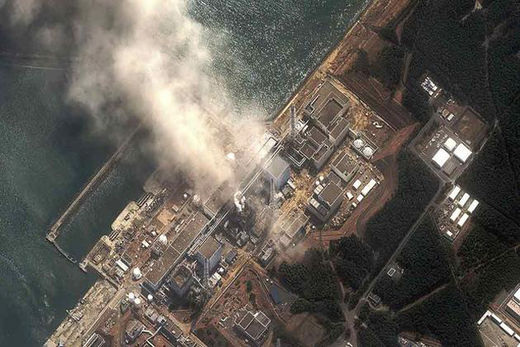
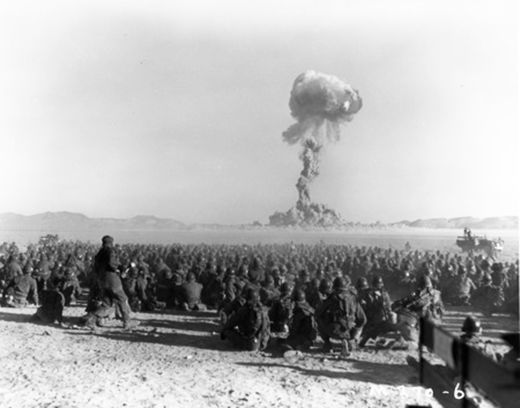
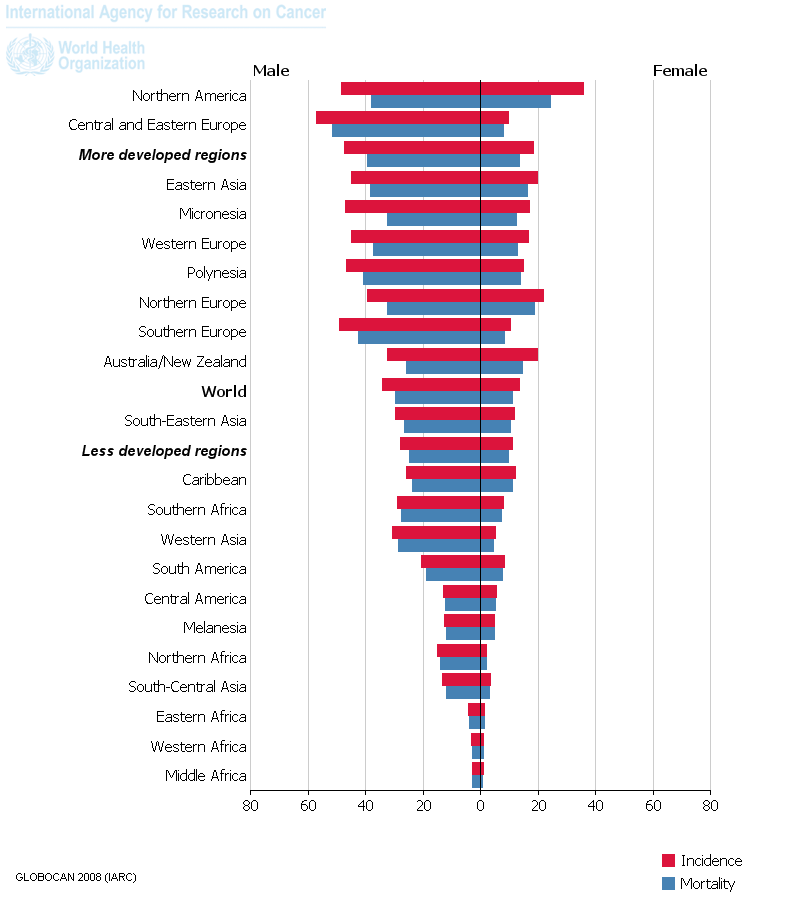
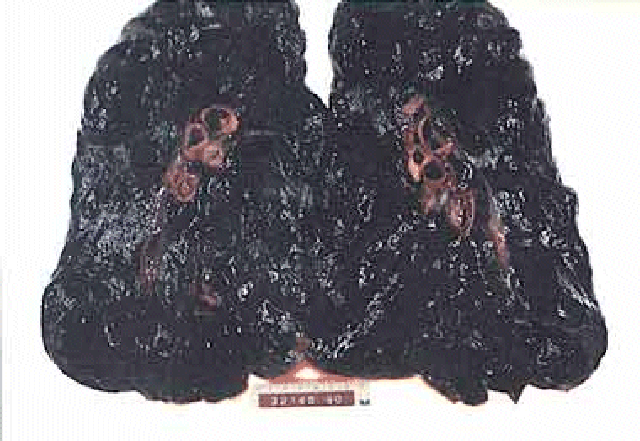
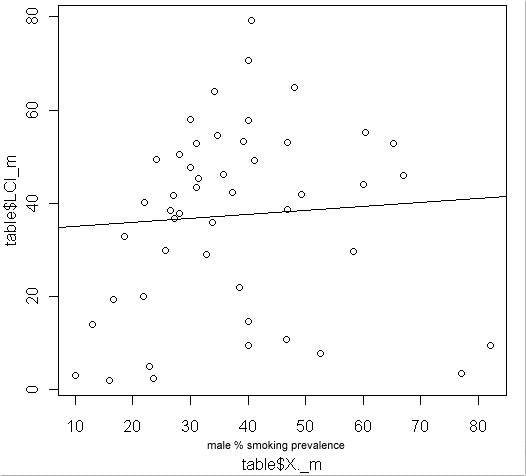



.... smoking kills!!! Period. I can see that the "BIG Tobacco" jackals are at it again and have started an underhanded and insidious approach to increasing their grip on the innocent youth of the world.